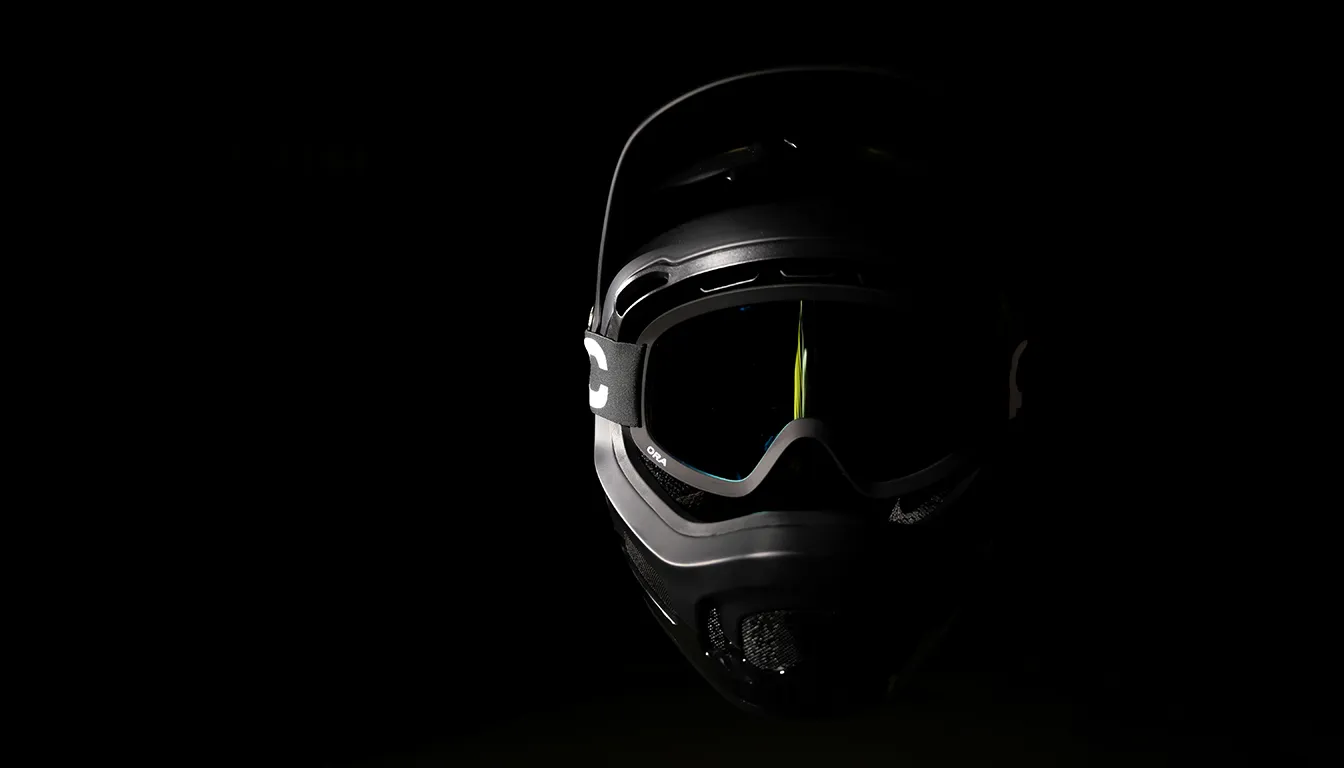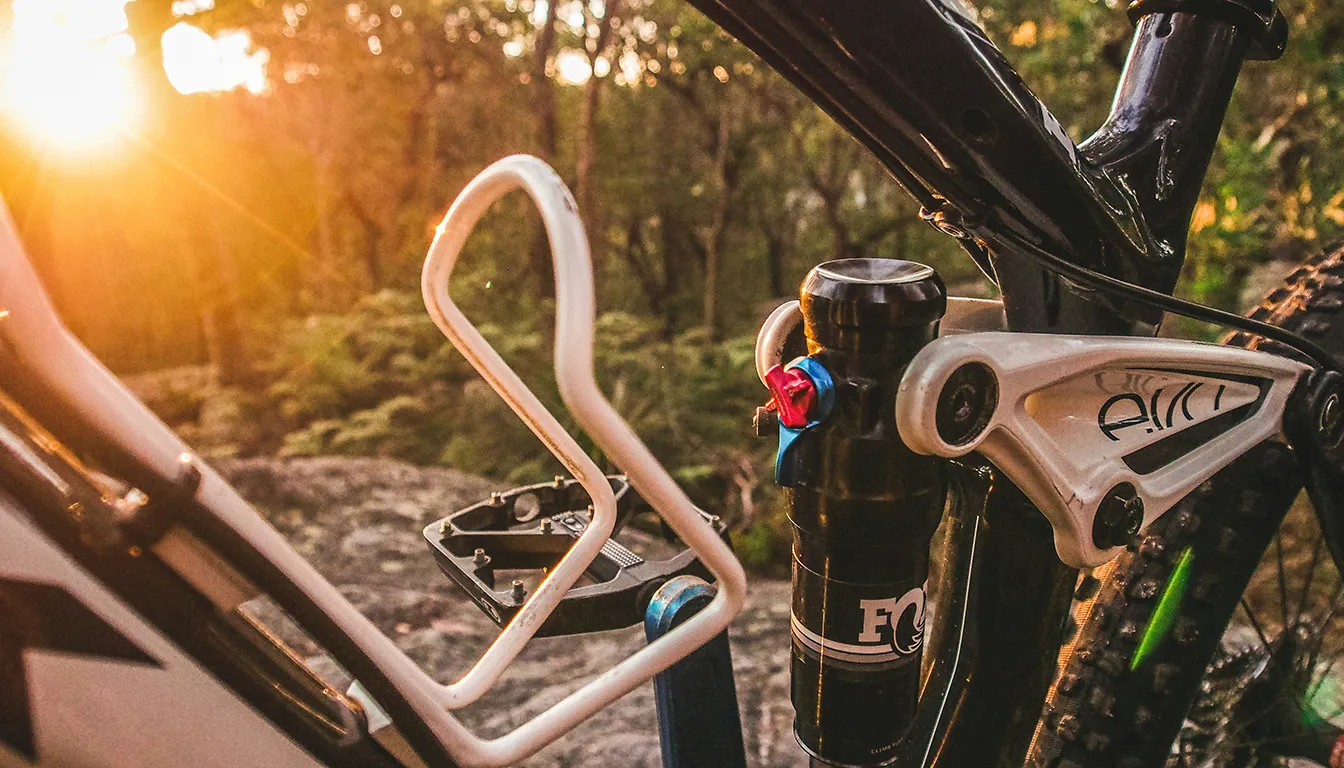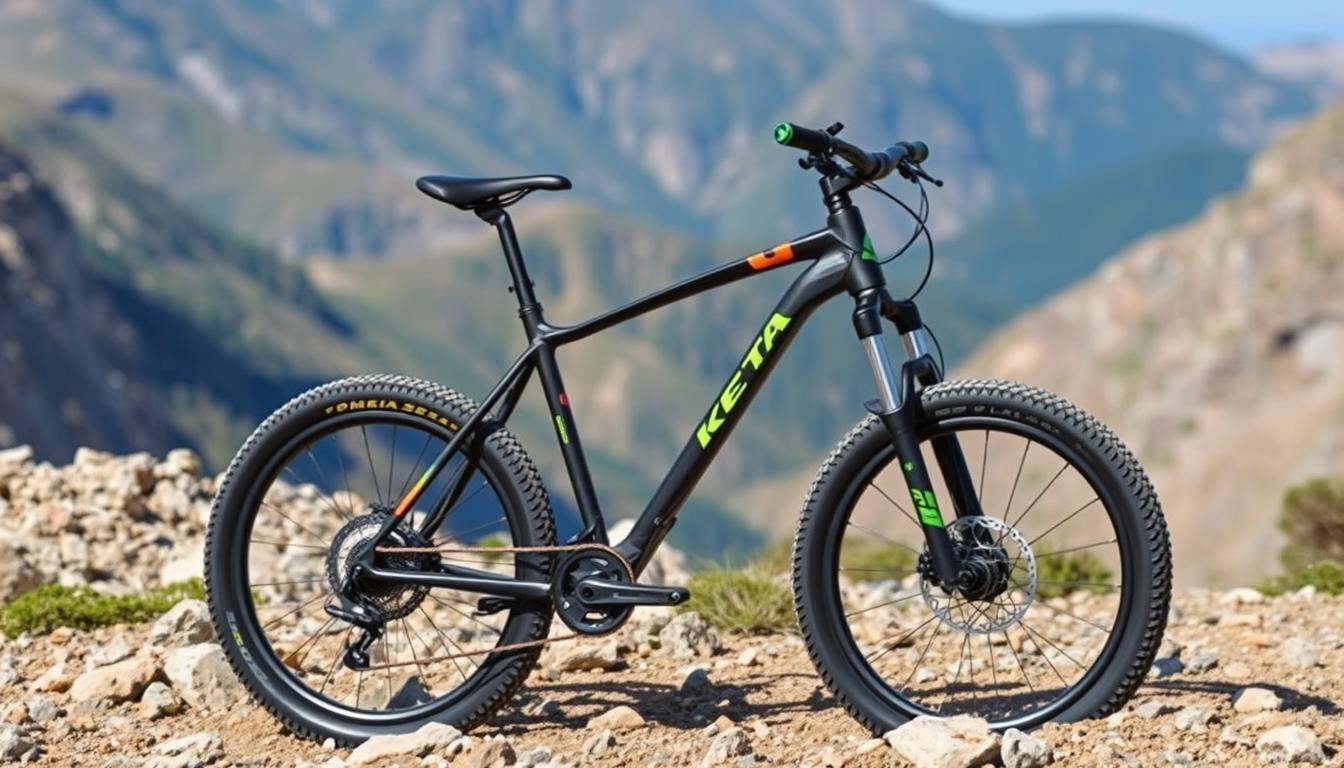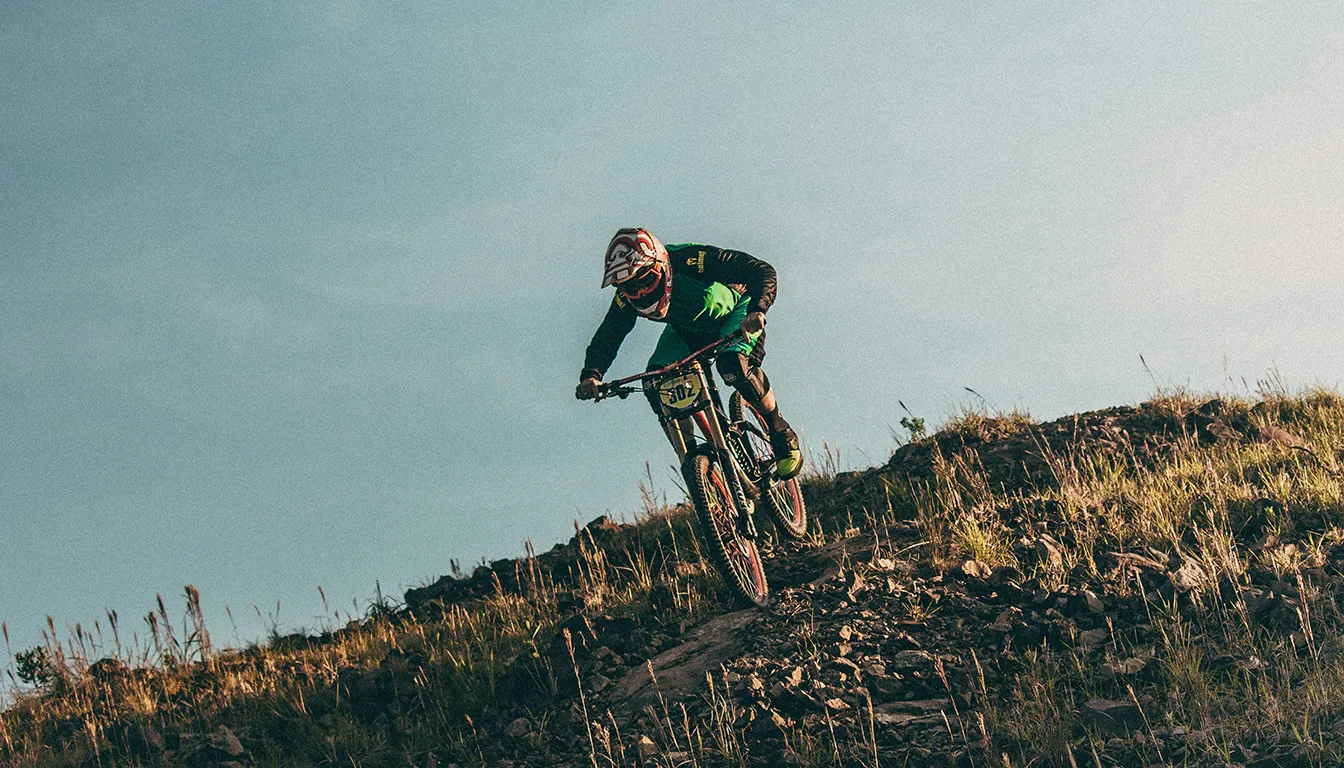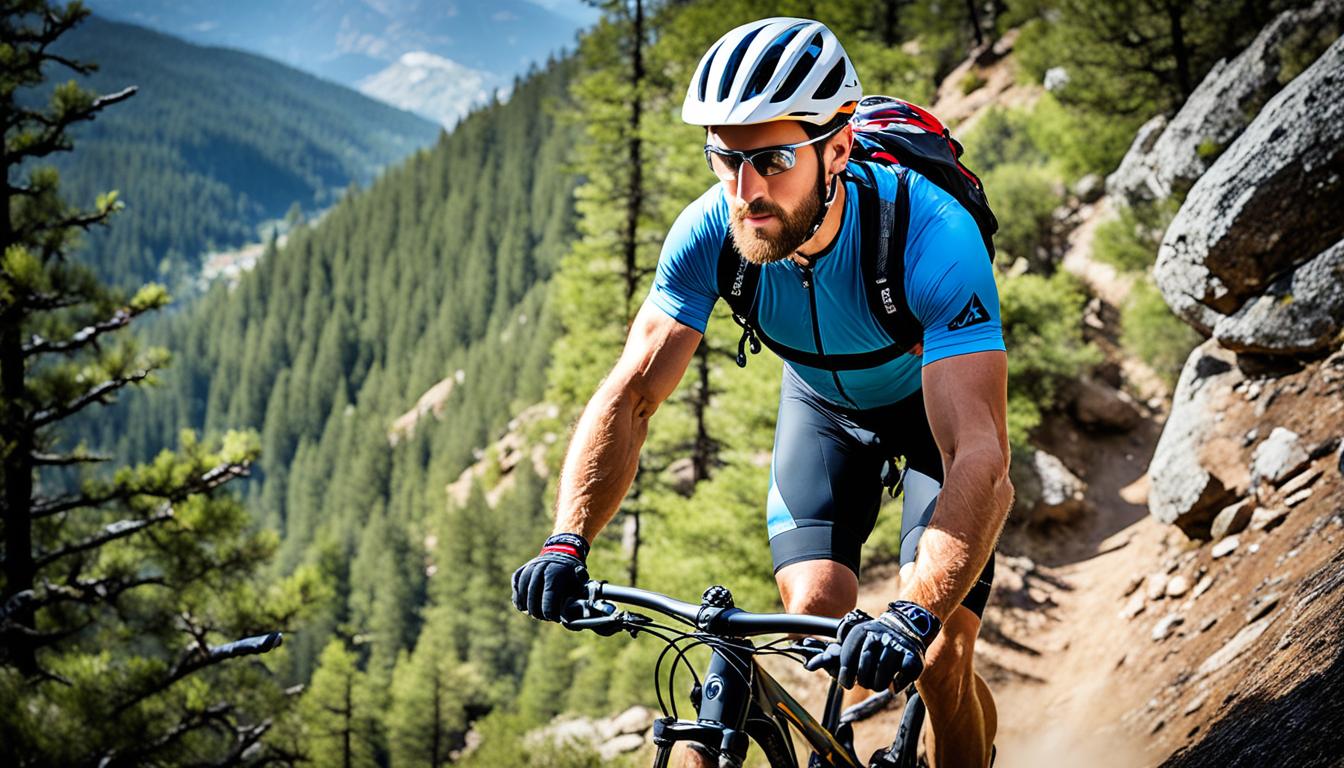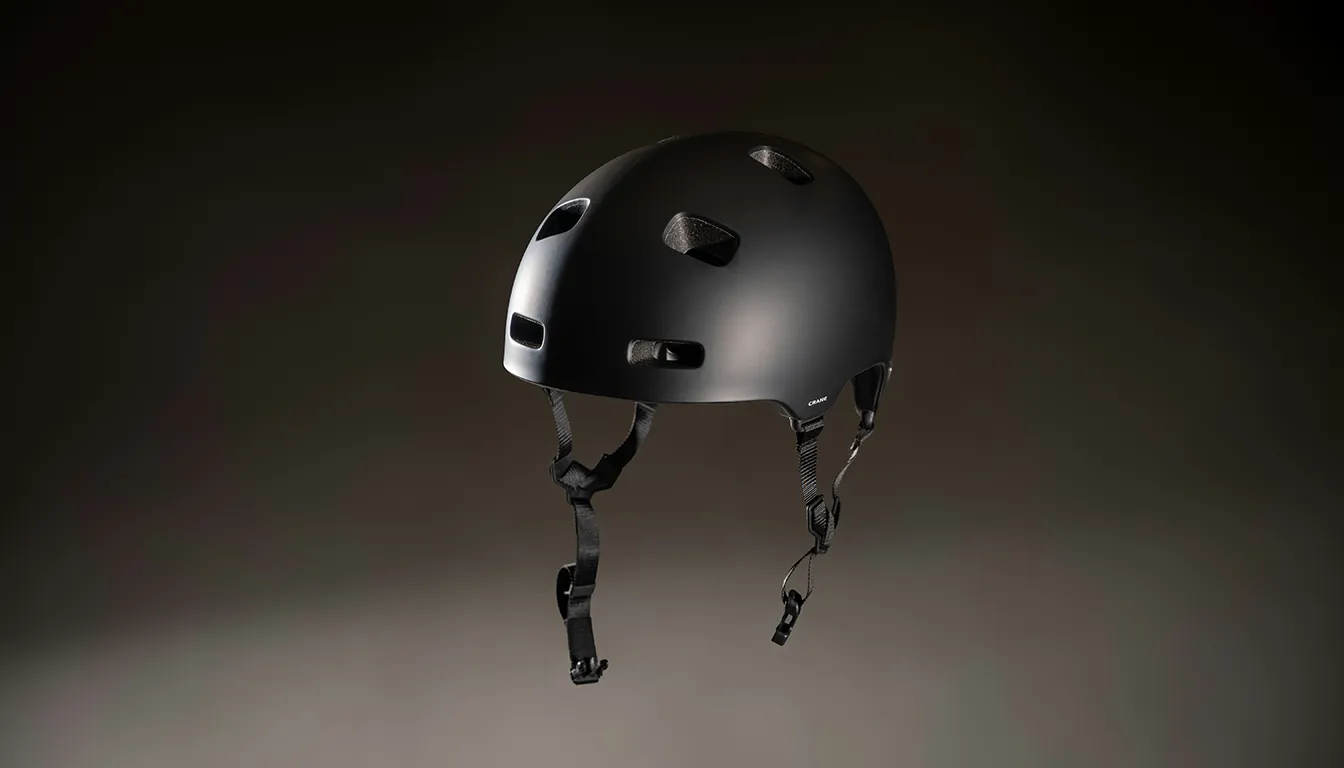Before you hit the trails, getting the right mountain bike gear is key. It ensures not just better performance but also keeps you safe. Gear that fits well and suits your level, whether you’re new or experienced, brings comfort and trust in your ride.
Helmets are a must for protecting your head, while the right shoes improve pedalling. Being ready for anything, like having a first aid kit or extra inner tubes, is important too. Choosing the best equipment means you’re safer and can perform better on your bike.
We’re going to look at essential mountain bike gear, focusing on safety and improving your riding. Let’s dive into the mountain biking world and see why good gear is smart and essential.
Understanding the Importance of Mountain Bike Gear
Bike safety is crucial for new and seasoned riders. The right gear ensures safe, fun rides and better performance. Riding without it could expose you to danger.
The importance of gear is huge for handling different terrains. The right gear makes you comfortable and boosts your trail performance. Knowing about gear ratios and drivetrain types, like single chainring systems, helps a lot.
A good gear setup is key. It includes knowing how to shift gears well, especially on steep hills or descents. Choosing the right gear and maintaining it extends its life and reliability.
Being prepared means having all the right biking gear. Beyond bikes, think about helmets, knee pads, and gloves. These items are vital for a great riding experience.
Understanding gear benefits and maintenance boosts your biking skills. Regular checks and knowing your equipment’s value keeps you ready for any trail challenge.
Essential Safety Equipment for Mountain Biking
Safety gear is key in mountain biking. It’s important to pick the right mountain bike helmet and extra protection. This keeps riders safe. We’ll look at what gear you need for a secure journey.
Mountain Biking Helmet
The mountain bike helmet is a must-have. It uses high-density foam and systems like MIPS to protect during falls. Prices range from £60 to £120. Look for good ventilation and a snug fit.
Protective Gear
Other protective gear is just as crucial. Here’s what you need:
- Knee Pads: Great for tough trails. They keep knees safe.
- Elbow Pads: Needed for downhill. They protect elbows on fast rides.
- Mountain Biking Gloves: Offer better grip and protect hands.
- Protective Eyewear: Better than regular sunglasses for keeping debris out of your eyes.
- Body Armor: A must for bold riders, offering lots of protection.
| Protective Gear | Function | Recommended Use |
|---|---|---|
| Knee Pads | Absorb shocks and protect joints | Rugged terrain and downhill riding |
| Elbow Pads | Reduce impact during falls | Downhill and high-speed rides |
| Mountain Biking Gloves | Improve grip and protect hands | All types of mountain biking |
| Protective Eyewear | Protect eyes from debris | Every ride |
| Body Armor | Protect against severe impacts | Aggressive downhill rides |
Choosing the right protective gear to suit your riding style is key. Quality gear not only improves your performance but also boosts confidence across different terrains.
Must-Have Mountain Bike Gear for Performance
Getting the right gear can greatly improve your mountain biking. Biking pedals and mountain bike shoes are key for good trail control. Wear the right cycling apparel and use helpful bike accessories for better comfort and performance. This ensures a great ride.
High-Quality Pedals and Shoes
Choosing the right pedals is crucial for biking. You can pick from flat to clipless types, depending on how you ride. Clipless pedals boost your control and power on hard trails. It’s important to match them with the right mountain bike shoes. Look for shoes that have hard soles and sticky grips. This improves your grip and control.
Bike Wear and Accessories
What you wear affects how well you ride. Choose materials that keep you dry over cotton. You’ll need padded shorts for long rides, and don’t forget gloves and hydration packs. These bike accessories help you stay comfy and focused. For more essential gear, see this comprehensive guide.
Maintenance Tools and Repair Kits
Every mountain biker knows how important it is to keep their bike in top shape. Buying dependable bike maintenance tools and repair kits can make your rides smooth or frustrating. Items like a good mountain bike pump and a multitool are vital for being ready for any issue on the trail.
Pump and Flat Repair Kit
Having a reliable mountain bike pump is key. It lets you set your tyres to the perfect pressure for those long rides. For home, a sturdy floor pump works best. When you’re out riding, you’ll need a small hand pump or CO2 inflator for emergencies.
You should also have a flat repair kit. It needs to include spare inner tubes, a patching kit, and tyre levers. These tools allow you to fix punctures fast. This means less waiting and more riding, giving you confidence on your journey.
Multitool for On-the-Trail Repairs
A good multitool is a must-have for quick fixes outdoors. Cyclists come across many situations needing adjustments or repairs. Your multitool should have different hex bits, screwdrivers, and a chain tool. With the right multitool, you can deal with small issues fast and keep enjoying your ride.
Buying top-quality maintenance tools and repair kits is a smart choice. Brands like Birzman, Unior, and Feedback Sports sell comprehensive tool kits for all kinds of mountain bikes. They are great for both new and experienced riders. Make sure to have a multitool and a trusty pump. They keep you ready for anything on your biking adventures.
Choosing the Right Mountain Bike Gear
Choosing the right mountain bike gear is important. Think about how you ride and where you’ll go. Make sure your gear is comfy and fits well for fun trail rides.
Gearing up means checking out chains and cogs. You can find chainsets with one to three rings. A 34/50 chainset with an 11/32 or 11/34 cassette is good for beginners. It helps with hills and is easy to use. More experienced riders might like a 36/52 for a nice middle ground.
Drivetrains are changing too. Many now prefer 1x drivetrains for easier shifting and better bike performance. Shimano and SRAM are big names here. Shimano’s XT range is versatile, with options for any rider’s preference.
The quality of your accessories, like chains, is key. A good chain lasts longer and won’t cost too much. SRAM’s electronic shifting is also great. It shifts smoothly, making rides hassle-free.
It’s wise to read reviews and follow a solid gear guide. Talking to bike shop experts can also help. They give advice that’s tailored to you, improving your ride.
| Component | Features | Best Usage |
|---|---|---|
| Chainset | 1, 2, or 3 chainrings; size ranges from 30T to 44T | Climbing, technical trails |
| Cassette | 8 to 13 sprockets | Varied terrains |
| Drivetrain Type | Wide-range 1x, electronic shifting | Performance and efficiency |
| Chain Quality | Mid-level with high durability | Frequent riding |
Conclusion
Investing in top-notch mountain biking gear does more than keep you safe. It also improves how well you ride and how much fun you have. Items like MTB gloves, helmets, and bikes in good condition are key for a great time on the trails.
When picking gear, think about what each piece does just for you. Good MTB gloves, for instance, make the ride comfy and safe by absorbing shocks. Bike tech has also gotten better, like electronic gears and smart suspension, making it easier to handle different kinds of paths.
Having the right equipment means you’re all set for exciting mountain biking adventures. Choose gear that fits how you ride. Always go for what makes you comfortable and safe. This way, you’re ready for anything you might find on the trails.
FAQ
What is the most important piece of gear for mountain biking?
The most crucial piece of safety equipment is the mountain biking helmet. It greatly lowers the chance of head injuries when you crash. Studies show it can reduce severe head injuries by up to 50%.
What should beginners look for when buying mountain bike gear?
Beginners must focus on essentials like helmets, protective gear, and good shoes. It’s key to get gear that meets safety standards and feels comfortable for long rides.
How can I enhance my riding performance?
To better your riding, choose the right pedals and clothes. Aim for breathable materials and the right shoes. This boosts comfort and control when biking.
What tools should I carry for trail-side repairs?
Always carry a dependable pump, a flat repair kit, and a multitool. This kit lets you fix mechanical problems, flat tyres, and do adjustments quickly on the trail.
How does protective gear contribute to mountain biking safety?
Gear like knee and elbow pads, gloves, and padded shorts lessen shocks and cuts if you fall. They greatly increase comfort and safety for the rider.
Is it necessary to consult with professionals when choosing gear?
Yes, it’s wise to seek expert fittings and advice at local bike shops. They help you pick the best products for your riding style and the terrain you’ll face.
What are the benefits of wearing moisture-wicking clothing while biking?
Moisture-wicking clothes pull sweat from your body, keeping you dry. This boosts your comfort on rides and helps you perform better, especially on longer trails.
How do I maintain my mountain bike gear?
Regular upkeep, including pumping your tyres, cleaning your bike, and checking your gear, keeps everything working right. This care helps your biking equipment last longer.
